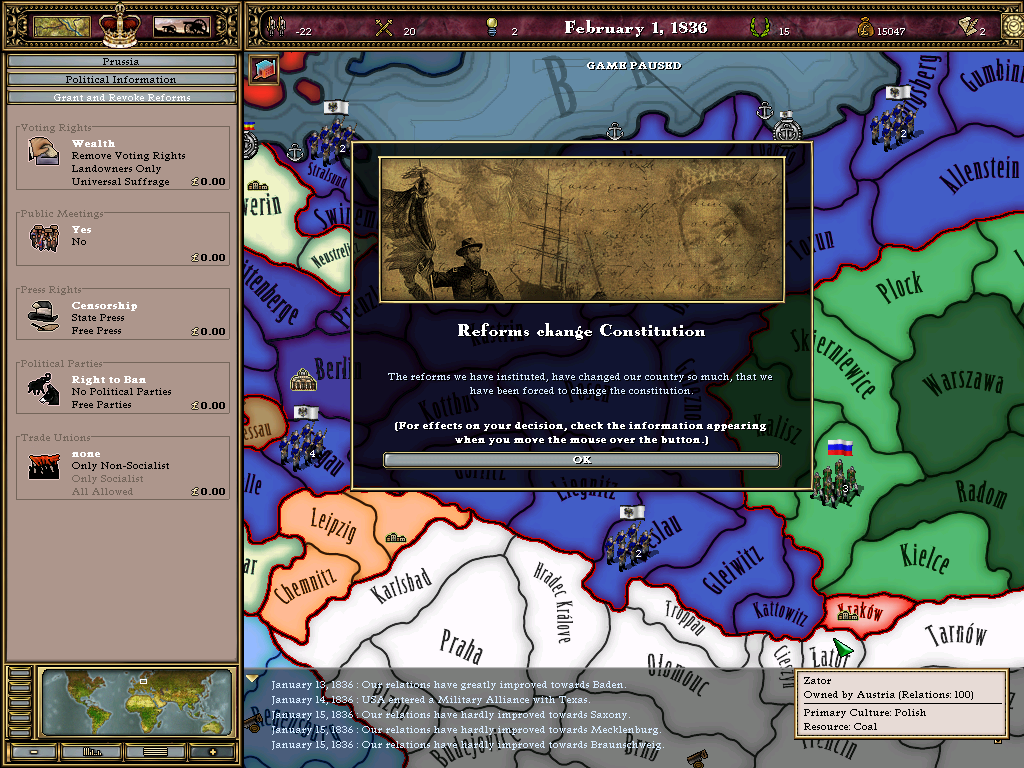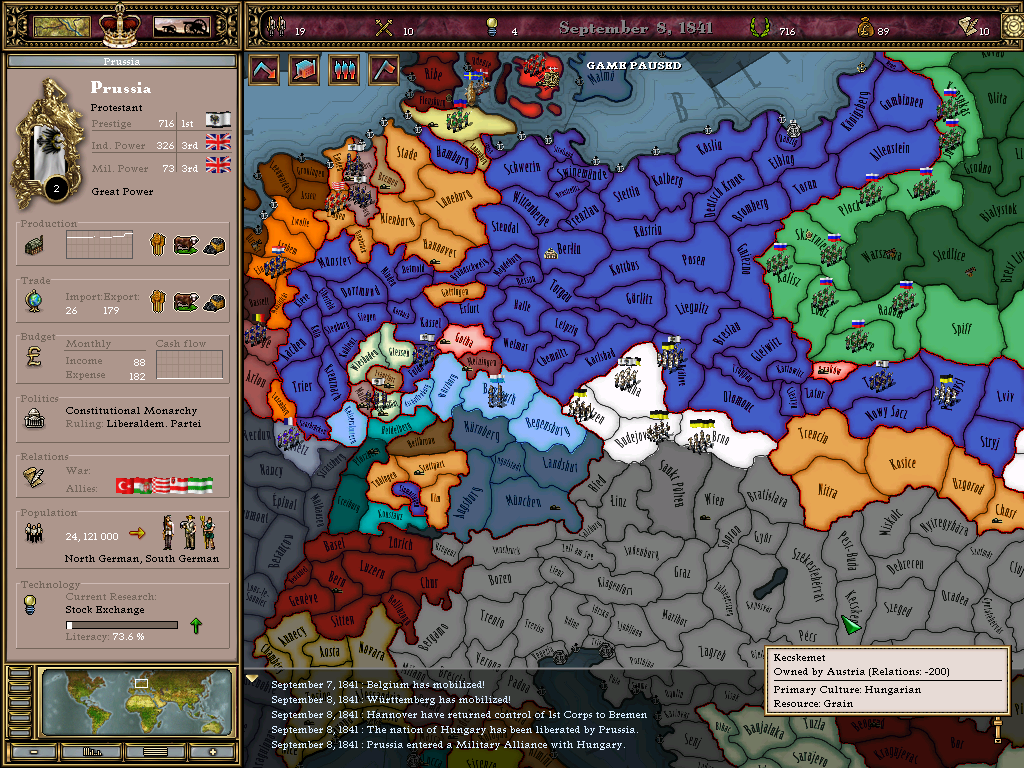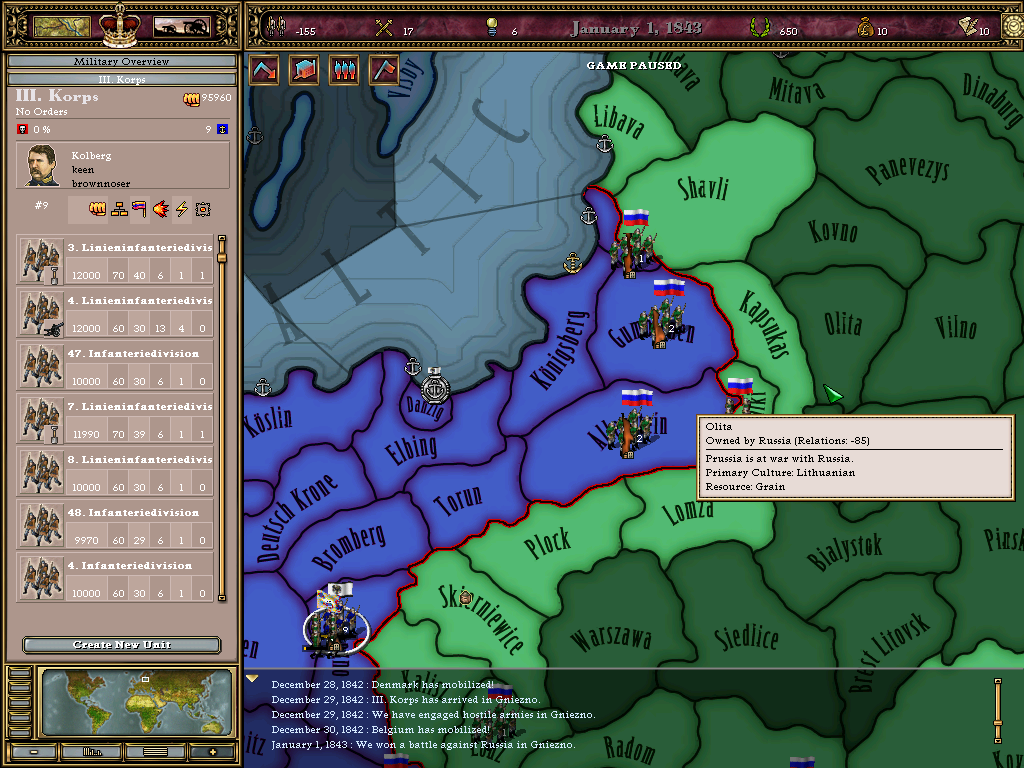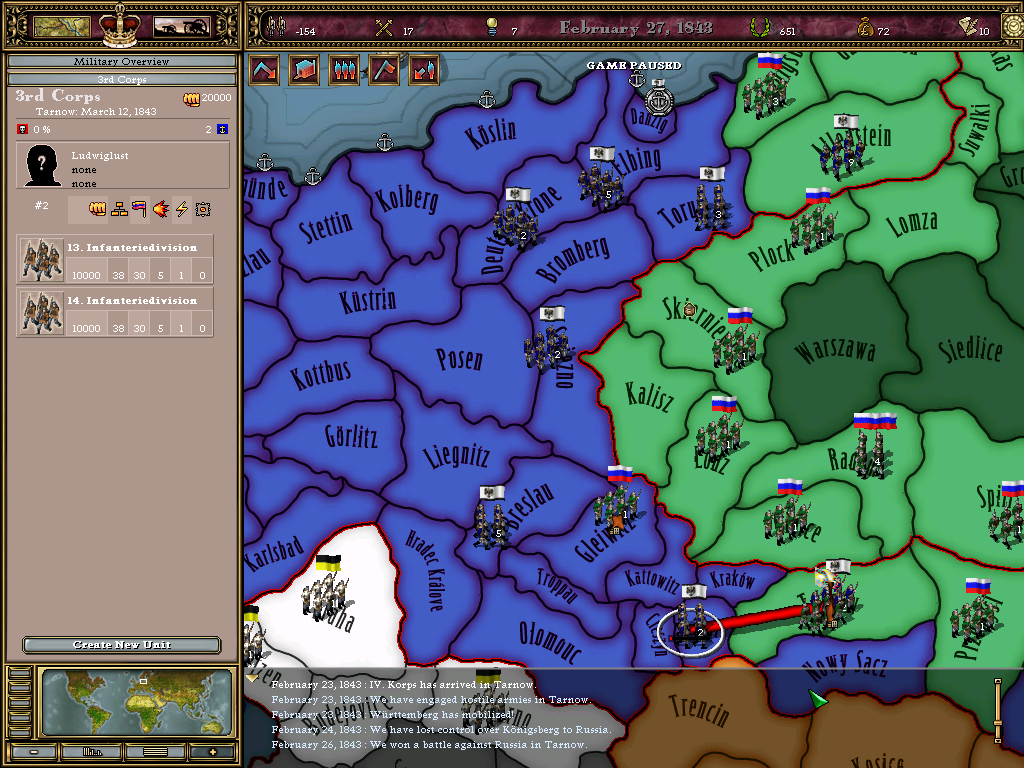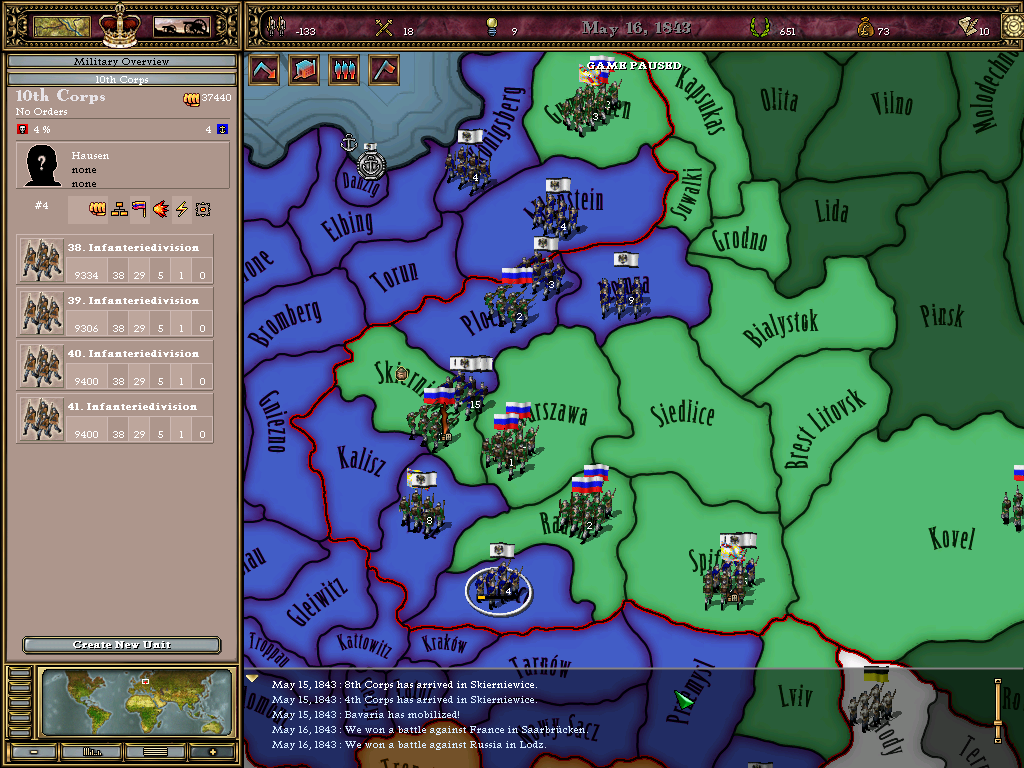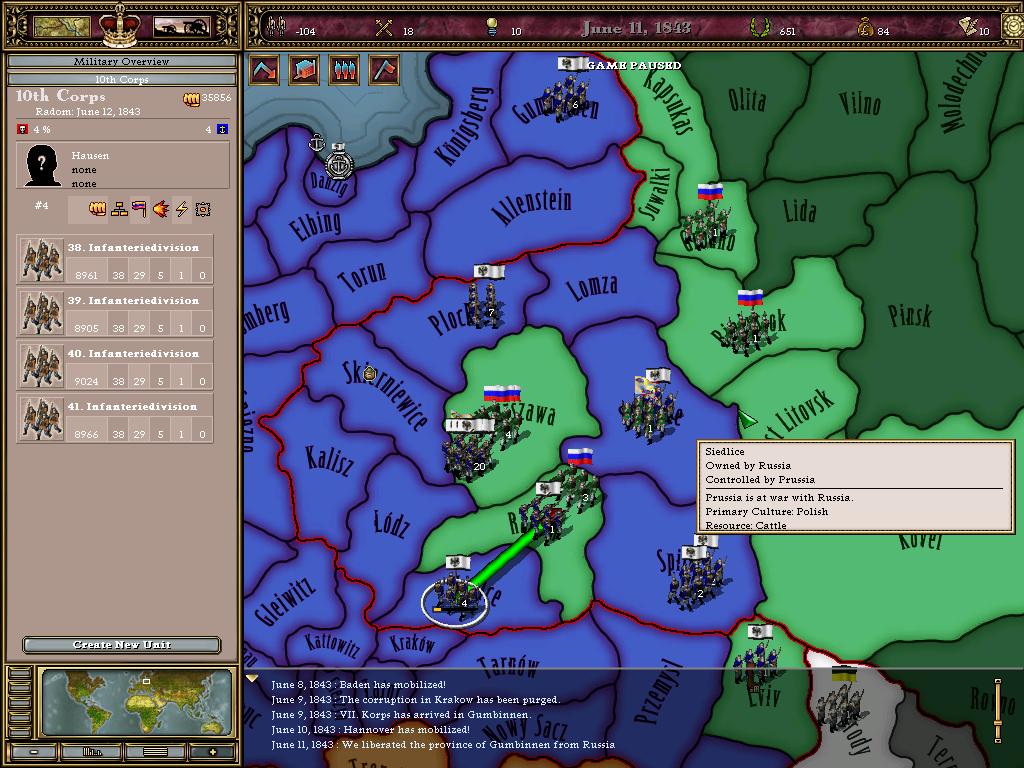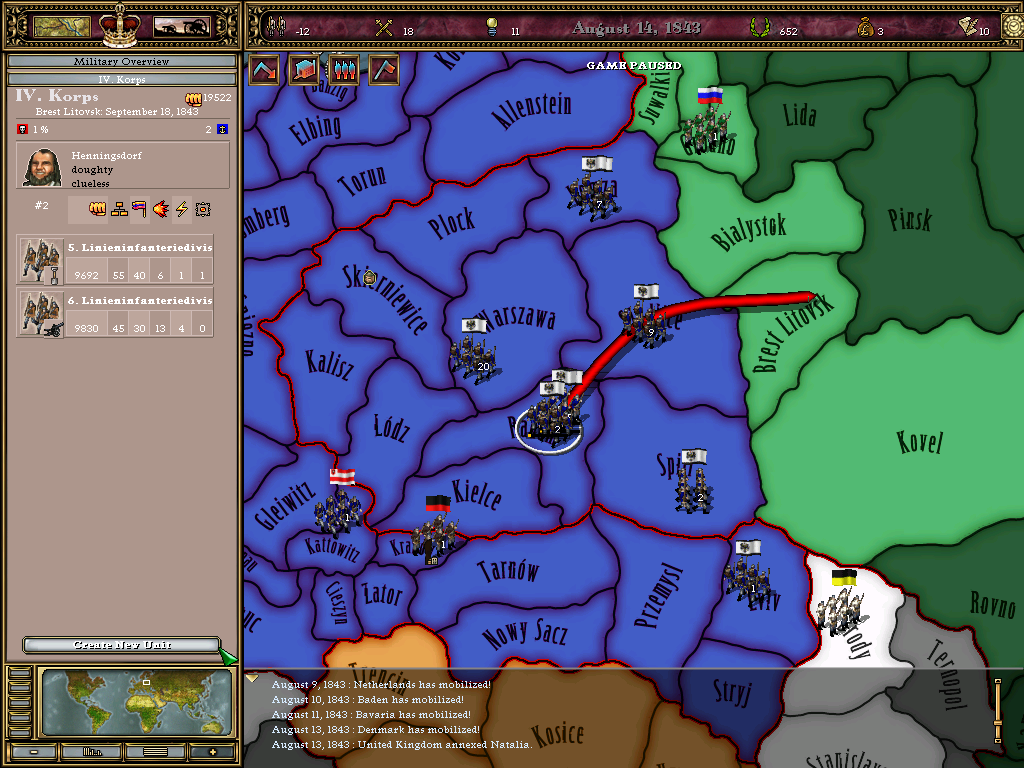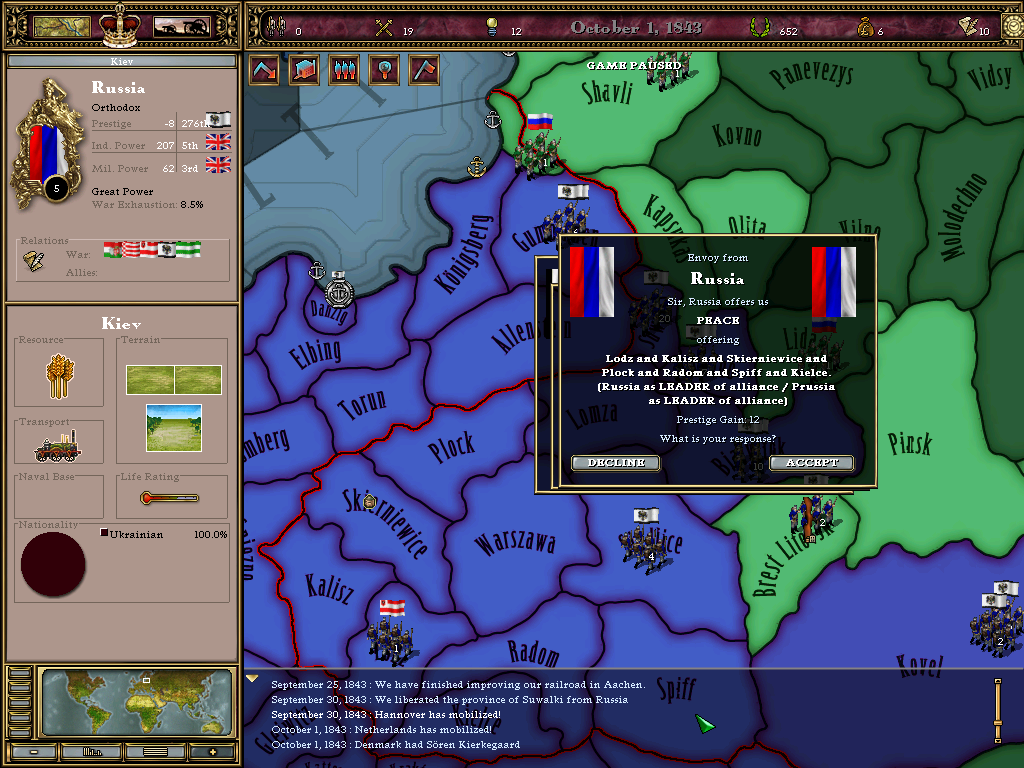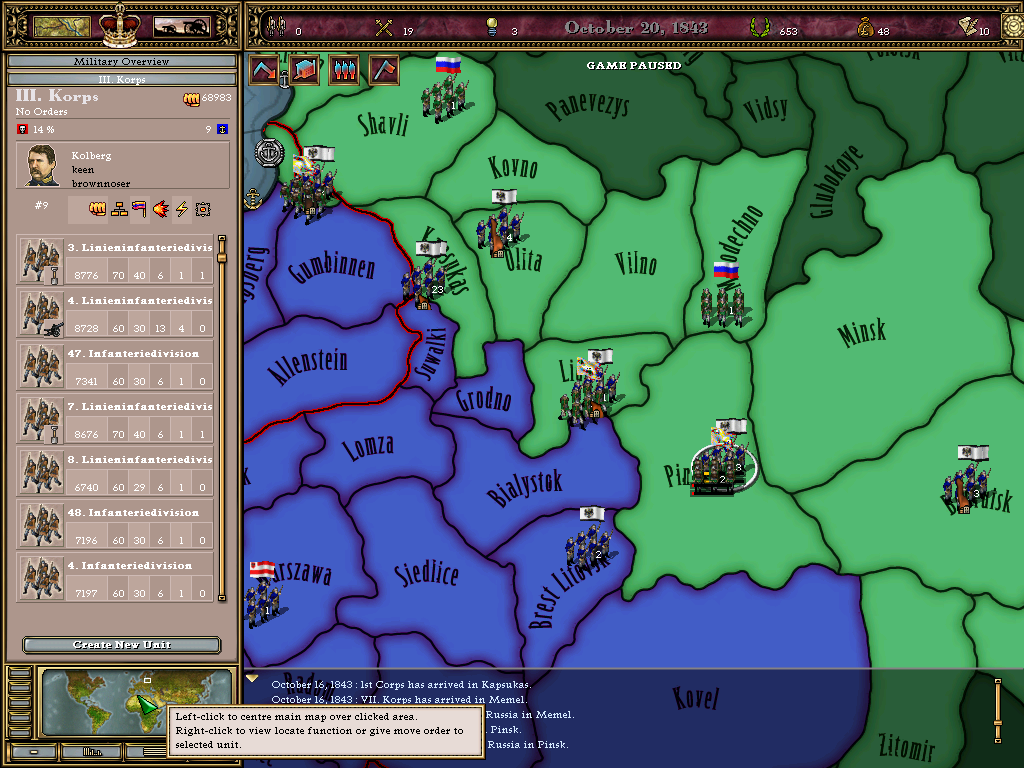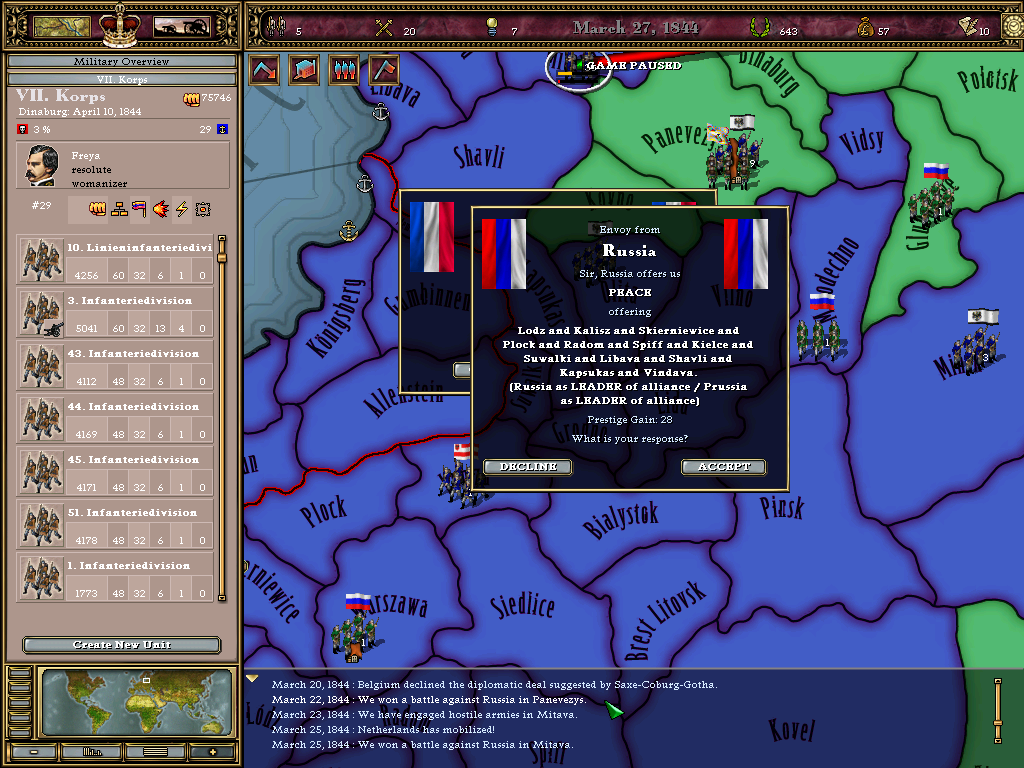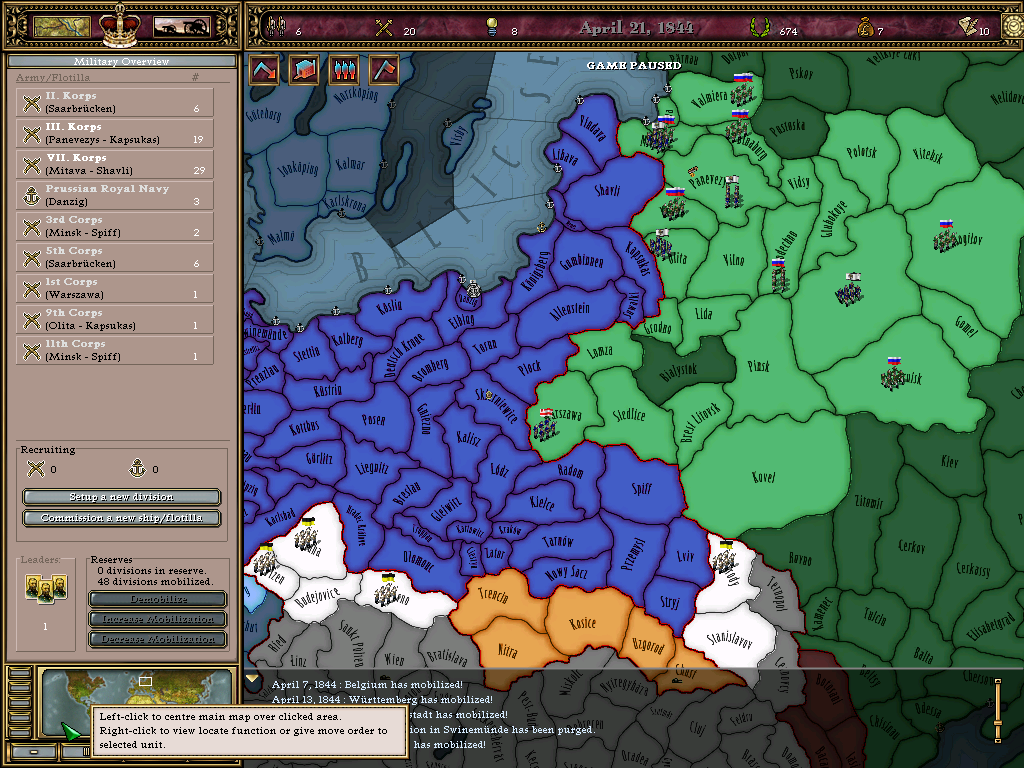This AAR will follow the history of Prussia as it attempts to unite all Germans under one state and then the history of Greater Germany (hopefully) after that. I am shooting for triggering the Popular Unification event with Austria being included in the unification. I will continue to write my CSA AAR in conjunction with this.
Berlin, 1835
Frederick Louis's royal carriage slowly plodded down the main street of Berlin back to the king's residence. Inside the carriage, King Frederick Louis of Prussia tried to relax in his seat, but the events currently happening in Prussia were making it hard to get any relaxation. Liberals had been constantly dogging him about setting up a constitution and other weak institutions that he would have none of, but their constant attacks were taking a toll.
The King had gained many enemies as a result of his anti-liberal policies, and the enemies that formed against the King were going to make this day a fatal day for the royal family. A young man, ironically named Frederick, stood on the side of the street, nervously grasping his pistol. The royal carriage would soon be passing in front of him, a perfect target for his weapon.
As the carriage passed in front of Frederick, he stepped out into the street, firing two shots into the carriage. Two royal hussars reacted quickly, galloping around the guilty youth, knocking him to the ground.
Inside the carriage, worried courtiers rushed to see King Frederick William's condition. There was nothing they could do. The two bullets had struck home, killing the King instantly.
-------------------------------------------------------------------
A few days later, William, Frederick William's brother, was crowned King of Prussia. Many liberals hoped this coronation would spring new life into the movement for democracy and for a united Germany.
And so the true beginning of our story will come one year into King William's reign, in 1836.
Chapter 1. Two Fateful Shots
Berlin, 1835
Frederick Louis's royal carriage slowly plodded down the main street of Berlin back to the king's residence. Inside the carriage, King Frederick Louis of Prussia tried to relax in his seat, but the events currently happening in Prussia were making it hard to get any relaxation. Liberals had been constantly dogging him about setting up a constitution and other weak institutions that he would have none of, but their constant attacks were taking a toll.
The King had gained many enemies as a result of his anti-liberal policies, and the enemies that formed against the King were going to make this day a fatal day for the royal family. A young man, ironically named Frederick, stood on the side of the street, nervously grasping his pistol. The royal carriage would soon be passing in front of him, a perfect target for his weapon.
As the carriage passed in front of Frederick, he stepped out into the street, firing two shots into the carriage. Two royal hussars reacted quickly, galloping around the guilty youth, knocking him to the ground.
Inside the carriage, worried courtiers rushed to see King Frederick William's condition. There was nothing they could do. The two bullets had struck home, killing the King instantly.
-------------------------------------------------------------------
A few days later, William, Frederick William's brother, was crowned King of Prussia. Many liberals hoped this coronation would spring new life into the movement for democracy and for a united Germany.
And so the true beginning of our story will come one year into King William's reign, in 1836.



